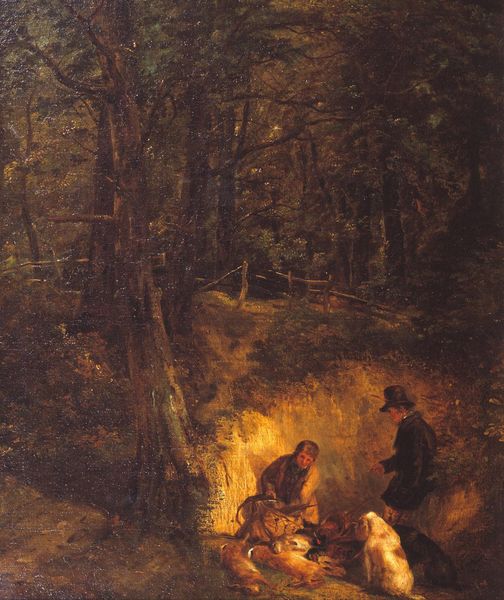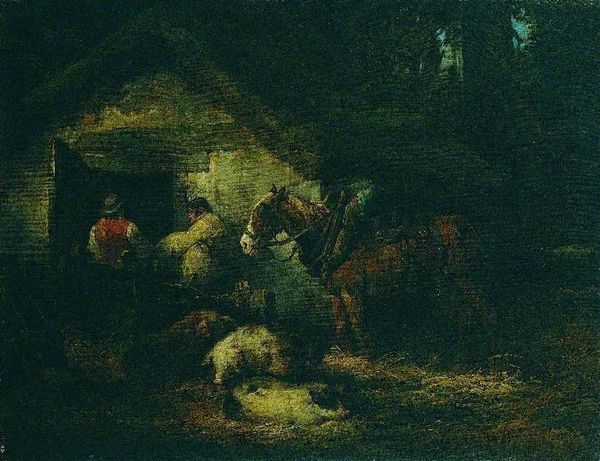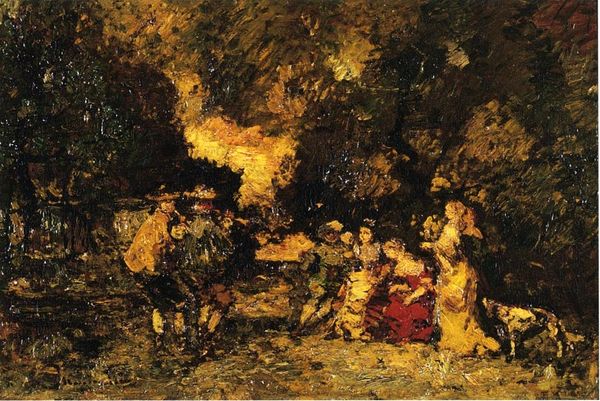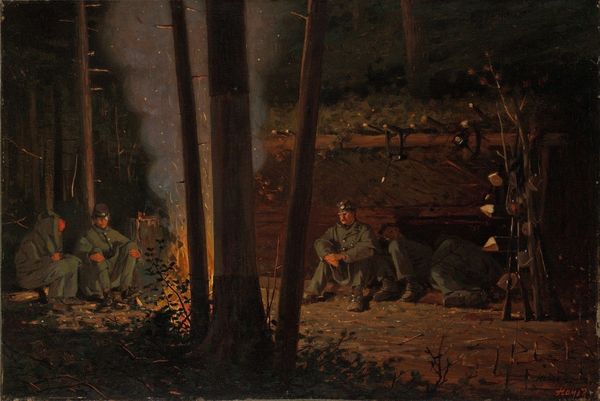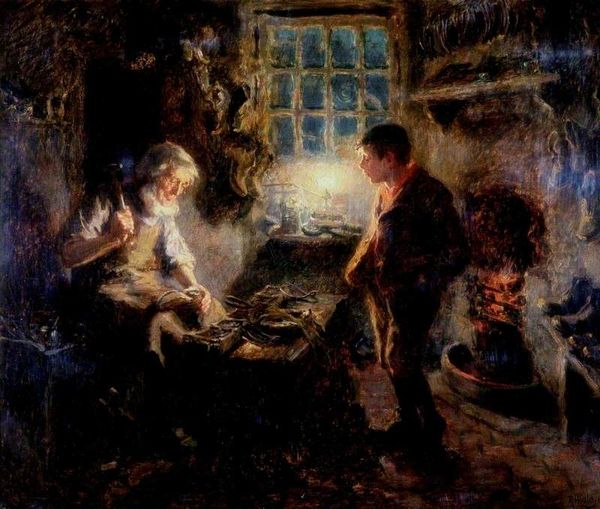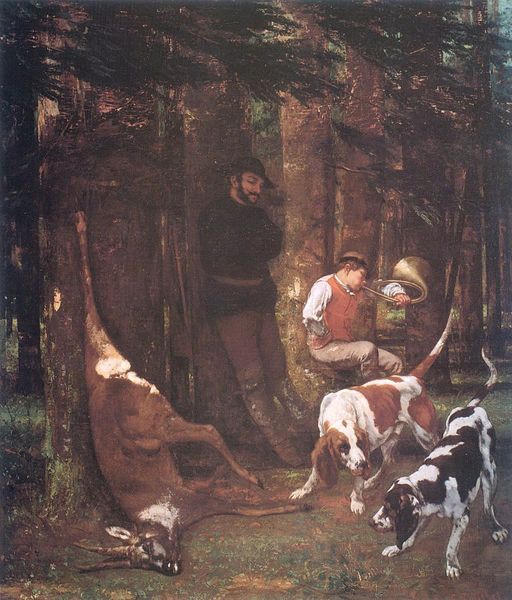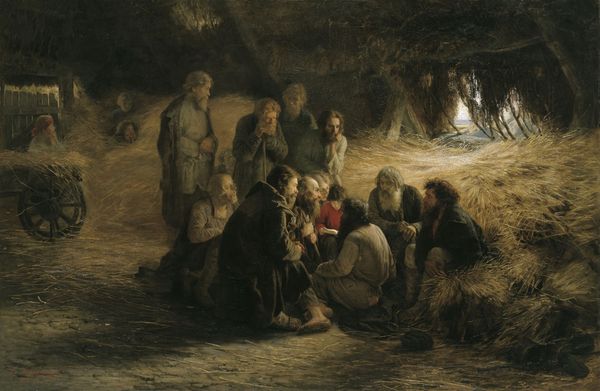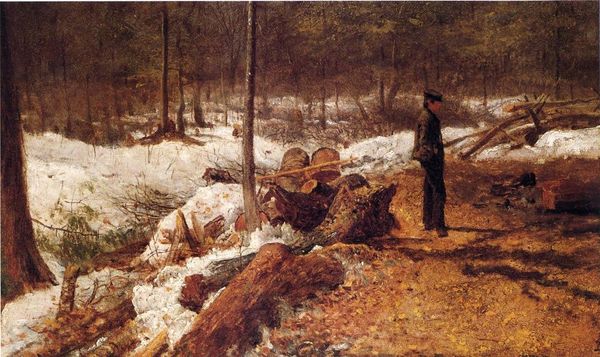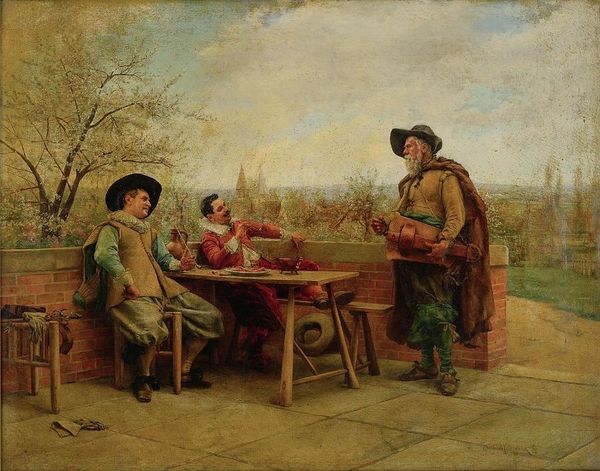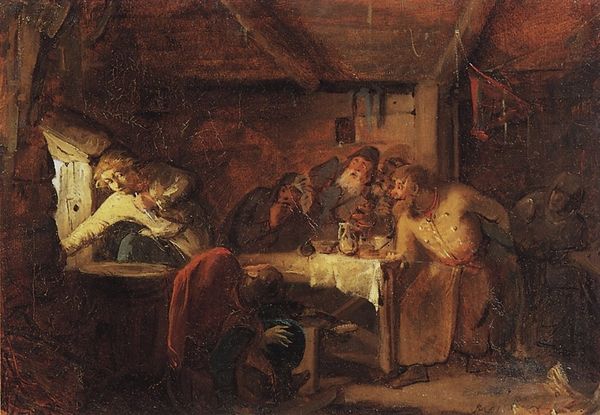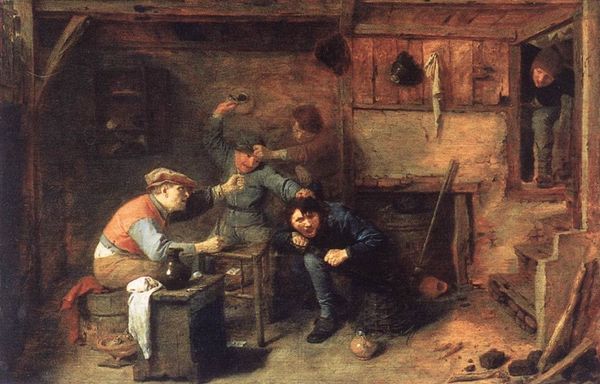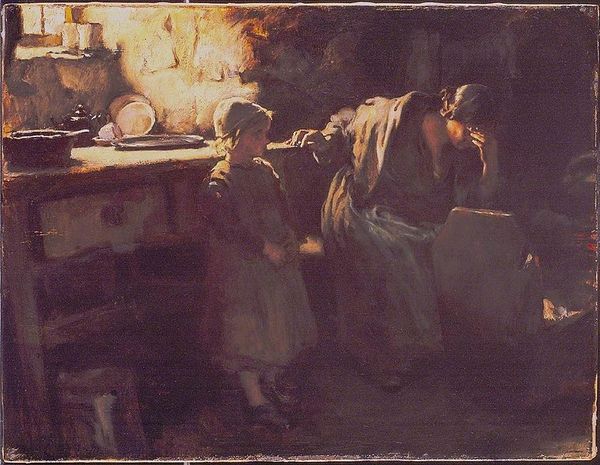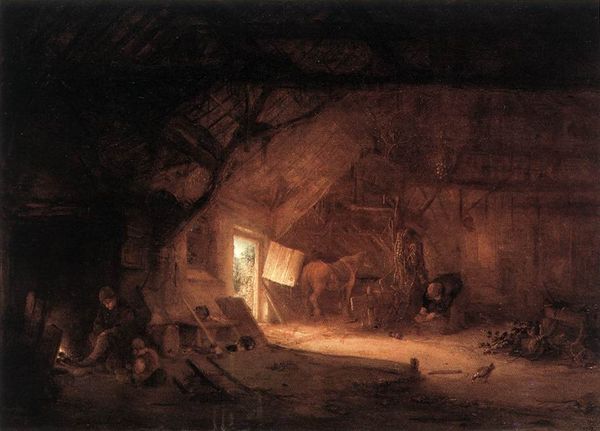
Copyright: Public domain
Editor: Here we have Eastman Johnson's "At the Maple Sugar Camp," created around 1870, using oil paint. It feels incredibly intimate, like we're peering into a private moment. What do you see when you look at it? Curator: I see Johnson engaging with a very specific cultural moment, popular imagery and its implications. He depicts this seemingly quaint scene of maple sugaring. It’s easy to view it through a nostalgic lens. Editor: Nostalgic how? Curator: Well, think about when and where this was painted. Post-Civil War America, right? Johnson, by depicting this scene of rural, possibly familial labor, evokes a simpler, perhaps idealized, past. But who is included in this vision, and who is excluded? Editor: Ah, I see. You're asking about the undercurrents, the socio-political context of what isn't shown, like labor divisions. Curator: Exactly. It's not just a picture of kids making syrup. Consider the Hudson River School influence, romanticizing the landscape. What purpose does that romanticization serve? Whose stories get told? Editor: So, even this seemingly innocent scene is a product of its time, reflecting and shaping societal views on labor, and perhaps even race? It's much more layered than I initially thought. Curator: Precisely. Analyzing art through a historical lens allows us to question those layers. Editor: That’s a powerful perspective, making me rethink how I approach any painting now! Thanks.
Comments
No comments
Be the first to comment and join the conversation on the ultimate creative platform.
